How Charlotte can learn from other cities, while creating opportunities for innovating housing ideas here locally
How Charlotte can learn from other cities, while creating opportunities for innovative housing ideas here locally.

If you've called Charlotte home since the years that surrounded the turn of the 21st century, you'll remember when affordable housing wasn't at the crisis level it is today. While unkept promises of mixed-income housing in the city stretches back to 1960s urban renewal, there was rarely a time or a street that didn't have plenty of houses up for sale.
From budget-minded fixer uppers to mansion-sized turn-keys, Charlotte had no shortage of housing stock. And if you didn't have the money to buy a home, you could opt to rent, which usually came at a much cheaper price.
Those days are long gone now.
Both racism and corporate profiteering pushed us here.
Close to half of all people renting in Mecklenburg County are — quite literally — cost-burdened, meaning more than one-third of their income is spent on the basics to live: housing and utility bills. For those who own or are buying, they’re competing (and usually losing) with Wall Street-funded investors for properties with inflated price tags, in increasingly racially-segregated neighborhoods. From where we live to where our kids go to school, racism’s role in Charlotte’s neighborhood — particularly the effects of redlining — remain our present.
Then there’s sheer economic forces.
By 2008, after nearly a decade of loans with sky-high mortgages and balloon payments that consumers didn't understand and couldn't afford, the American economy went belly up and the Charlotte housing market tanked.
The scores of people who would lose their homes or simply walk away from property when they saw words on documents like "foreclosure" and "loan default" was staggering, and the number of unoccupied and abandoned homes across the Charlotte-Mecklenburg region during that period is still unknown.
Leading up to that year, Charlotte had developed a reputation for being one of the country's largest centers for banking and finance, which attracted transplants from around the country and the globe. Many new residents flocked to the Queen City, looking for financial success in their careers and an affordable way of living.
So they came, and came, and came some more.
Charlotte was sold as a place of opportunity where people could put down roots and live a comfortable life at an affordable rate.
The population exploded. In the year 2000, according to census data, the population was just over 500,000. Current figures put it at nearly 900,000 (and that’s just Charlotte, not including the metro region).
Transplants from the northern states were accustomed to paying higher prices for home purchases and rental properties. Southern transplants were used to paying similar prices, and sometimes even lower. Whatever the case, available properties were snatched up quickly and friends and extended family were encouraged to jump on the wagon train to Charlotte.
A Gleaming City on the Hill?
For some, Charlotte truly had become the gleaming city on the hill.
But all of it came at a cost. Renters were especially hit hard. People who had lived in the city for many years were often priced out of their own neighborhoods. Many homeowners sold their properties and then realized they didn't have enough money to buy another home in the city. For workers in a lower income bracket, finding a place to live in Charlotte proper became next to impossible.
Add in the COVID-19 pandemic. Countless out of work Charlotteans were unable to pay their rent and homeowners faced the same quandary with mortgages.
Now, a slow exit from that long dark tunnel showed the only way to recoup vast amounts of lost capital was to jack up the cost of rent, homes — and just about everything else you can sell.
Is there a way to provide affordable, comfortable and attractive housing for individuals and families who wish to continue living in Charlotte?
The problem can’t be solved by one idea alone.
The Charlotte Journalism Collaborative spent the last several months investigating ideas and projects from four other cities Nashville, Philadelphia, Austin and Asheville.
Journalists from four Charlotte news outlets — The Charlotte Observer, Qnotes, WCNC and WFAE — joined forces to tell these stories. We set out to answer whether what works in those places could be part of Charlotte’s panacea — a Solutions City, of sorts.
Idea for Charlotte to steal: Nashville developer partners with housing nonprofit Subtitle here

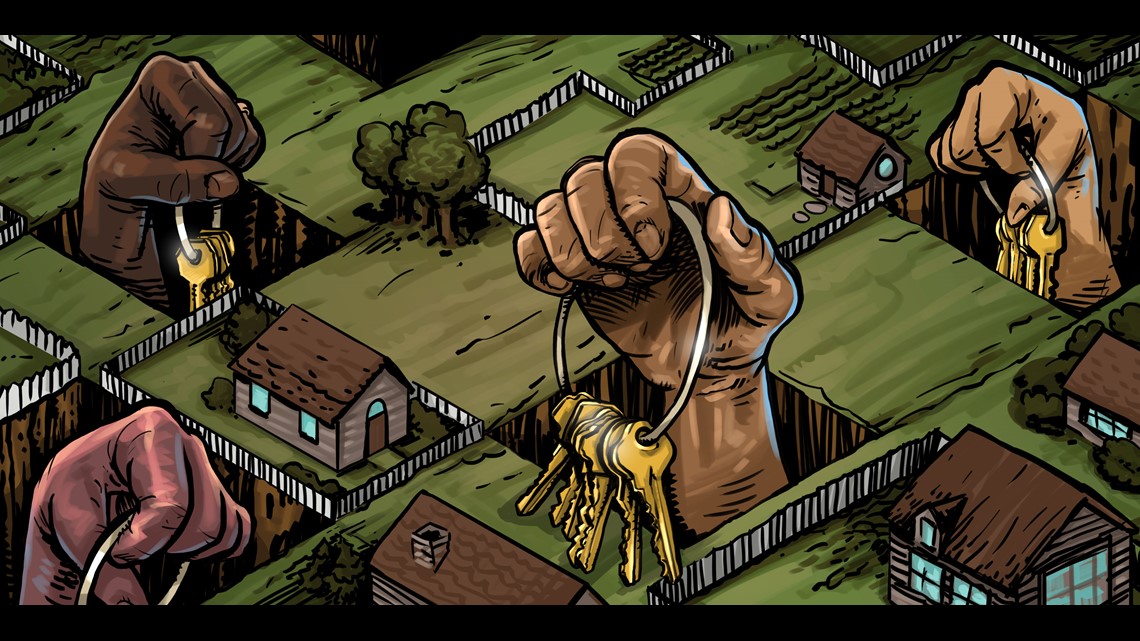
Author: Genna Contino, The Charlotte Observer
Those working to solve Charlotte’s housing shortage know each additional affordable unit is critical as population and needs grow.
The city of Charlotte calculated 32,000 units are needed to meet the needs of more than 50,000 Charlotteans who don’t have an affordable place to live. Since 2001, Charlotte has produced almost 11,000 units toward that goal through partnerships with nonprofits, developers and faith-based groups for residents who make below a certain percentage of the city’s median income.
Still, supply struggles to keep up with demand.
Charlotte sometimes looks to similar-sized cities — especially areas where the need is even greater — for inspiration, Charlotte Housing Services Director Warren Wooten said.
One possible solution: combining developer-owned land (and interests) with nonprofit-owned land.
In Nashville, Tennessee, a developer purposely bought a parcel near land owned by a nonprofit to increase how much affordable housing could be built there.
Like Charlotte, Nashville’s scars from urban renewal have not yet healed. Just as government programming forced Black residents out of their homes in Charlotte’s Brooklyn neighborhood in the ‘60s, neighborhoods surrounding Nashville’s urban core faced the same fate — leaving many without a home in the city they called home for generations.
“I thought, don’t just build one house and waste the land. Let me rezone it and build more houses,” said Shawn Bailes, president and CEO of Nashville development company Capital City Construction.
Nashville property data, like Charlotte’s, is digitized. So Bailes knew the property next to him was owned by nonprofit Affordable Housing Resources. He rezoned both his land and the nonprofit’s to allow for seven units total, including new units on what would have been the nonprofit’s parcel. Before rezoning, the city would have only allowed three combined units on the two parcels.
The few additional units may not seem like a lot, but Bailes looks at the additions as adding density that makes housing on the site more affordable. One house on a lot might cost $2,000 to rent. But a quadplex — four units — could have $600 rent for each unit, yield a higher return on investment for the developer over time and provide more affordable options for some of the thousands that need them.
“It’s just skinning the cat a different way,” Bailes said. “Demand is extremely high here. That’s why prices are high.”
‘The whole world has changed’
Bailes’ project is still in the permitting process. The two homes on the land owned by the nonprofit will be sold in the low $200,000s. In East Nashville neighborhoods, where the project will be located, no homes are listed under $350,000, according to Zillow.
Bailes has not decided a price range for the five units on his property, he said.
Rezonings that make a project more dense and affordable aren’t new. Developers regularly come before local government boards to petition for land use regulations allowing multifamily housing, duplexes, accessory dwelling units and other types of housing.

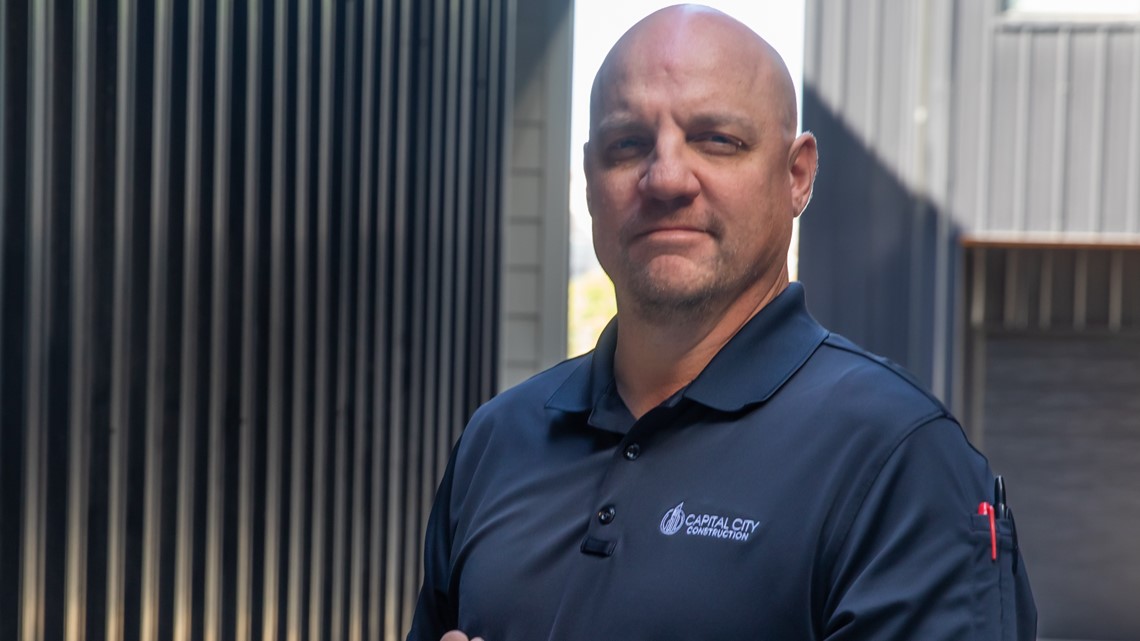
Bailes’ approach is different because he purposely sought out land near the nonprofit and offered his help through the approval process after finding out about the affordable housing project.
Building more dense housing in urban cores is necessary, said Affordable Housing Resources CEO Eddie Latimer. As median home and downtown land values rise alongside Nashville’s popularity, limited space will force developers to build up.
The nonprofit focuses on home ownership, which has become more unaffordable in recent years.
Bailes’ rezoning also created a way around quirky zoning laws. To build to the three-story homes they wanted, there had to be a 39-foot easement in the middle for a fire truck in case of emergency.
Has it worked in Charlotte?
Similar partnerships with nonprofits have worked in Charlotte.
A recent example in Charlotte is a partnership between Ascent Housing, an organization that acquires and preserves affordable housing, and homelessness nonprofit Roof Above.
Roof Above bought the 23-acre HillRock Estates apartment complex and worked with Ascent to acquire, finance and set an affordability plan for the project. The complex has 340 units including a mix of units spread throughout the complex for people who previously experienced chronic homelessness.
Roof Above received millions in corporate, philanthropic and government dollars to preserve the affordable housing, including $7 million in private donations and a $5 million low-interest loan from Atrium Health in exchange for using 50 of the units to house Atrium workers in need.
“We never could do it without a nonprofit being the owner and the equity provider,” said Mark Ethridge who leads Ascent Housing.
When the need remains as great as it is, Charlotte has to continue to be creative to fit in new units, wherever possible, Wooten said.
“We’re always open to unique opportunities with unique partners,” Wooten said. “There’s no formula for what makes the best affordable housing project.”
Has City Council action made it easier?
Charlotte passing the Unified Development Ordinance (UDO) this year, a document that determines what can be built where, could make it possible for more projects like Bailes’ in Nashville’s to fill gaps.
A provision in the UDO allows for more dense housing to be built in traditionally single-family neighborhoods, which drew public scrutiny. Some also argued it would further gentrification.
Gentrification can be marked by sleek apartment buildings, pricey restaurants and an influx of affluent white people in areas traditionally populated by people of color. Charlotteans have seen this first-hand as neighborhoods such as Wesley Heights and Cherry see trendy breweries and coffee shops open where quaint single-family homes housed much of Charlotte’s Black population for generations.
“While this document is not perfect — I’ll say it is not perfect — it really put us on a trajectory for change for our community and how our community will grow and the rules of the game that will govern that growth,” District 2 Councilman Malcolm Graham said when the UDO passed.
Former Councilman Matt Newton voted against the UDO.
“As the development market catches on to the increased profitability of duplex and triplex development, property values for that type of development will rise even further,” Newton said. “This will be a double whammy for residents in gentrifying neighborhoods.”
City housing services
Despite disparities, Charlotte remains more open to affordable housing construction than other cities in the state, Wooten said.
Both the city and Mecklenburg County passed source of income protections this year, meaning new projects subsidized by local government can’t turn down renters paying with Section 8 vouchers. The city was the first municipality in the state to pass such protections.
Charlotte also offers down payment and mortgage relief assistance programs to its residents through its HouseCharlotte and Mortgage Relief Assistance programs.
But when it comes to affordable housing projects and partnerships with nonprofits or private developers, the city acts like a bank with land or money to contribute. The city established its Housing Trust Fund in 2002 to provide financing for developers for affordable housing.
“The city is not in the business of owning housing,” Wooten with Housing Services said. “It’s not what we do.”
The city often provides what Wooten called a “gap subsidy” — a nonprofit or developer comes to them with a project they’re working on, but they’re missing one funding piece or they can’t afford the land. That’s where the city steps in, sometimes donating land or money to a project.
Since the creation of its Housing Trust Fund, the city has provided almost $218.8 million in gap financing for 10,869 new and rehabilitated units and 888 homeless shelter beds, according to Wooten.
The city currently owns 5,317.84 acres of vacant land in various shapes and locations, according to city spokesman Lawrence Corley III. Wooten said all surplus land is considered for affordable housing when the city is reviewing parcels to determine their purpose.
“Charlotte has a great climate for this work,” Wooten said. “You see both sides of the political spectrum prioritize affordable housing.”
Development without displacement
Affordable housing remains a priority among residents’ needs in Mecklenburg County, even as apartment projects across the city go vertical, a recent survey shows.
The 2022 Mecklenburg County Community Survey, presented to commissioners earlier this month, found 32% of residents thought affordable housing is the most important issue countywide, more than the 21% who said crime and the 16.2% who said schools.
Mecklenburg is the most unequal county in North Carolina as the top 1% make more than 30 times the bottom 99%, data from the nonprofit Economic Policy Institute show.
The challenge is balancing neighborhood preservation with a dire need for more housing supply — development without displacement.
Building up or building more units than one on a single lot can serve as a small solution to a big problem, Bailes said.
“People think developers are the reincarnation of the devil but that’s not actually the case,” Bailes said.
What Charlotte could learn from Philadelphia's fight to preserve affordable homes Philly has something Charlotte needs — and it's already saved 500 homes

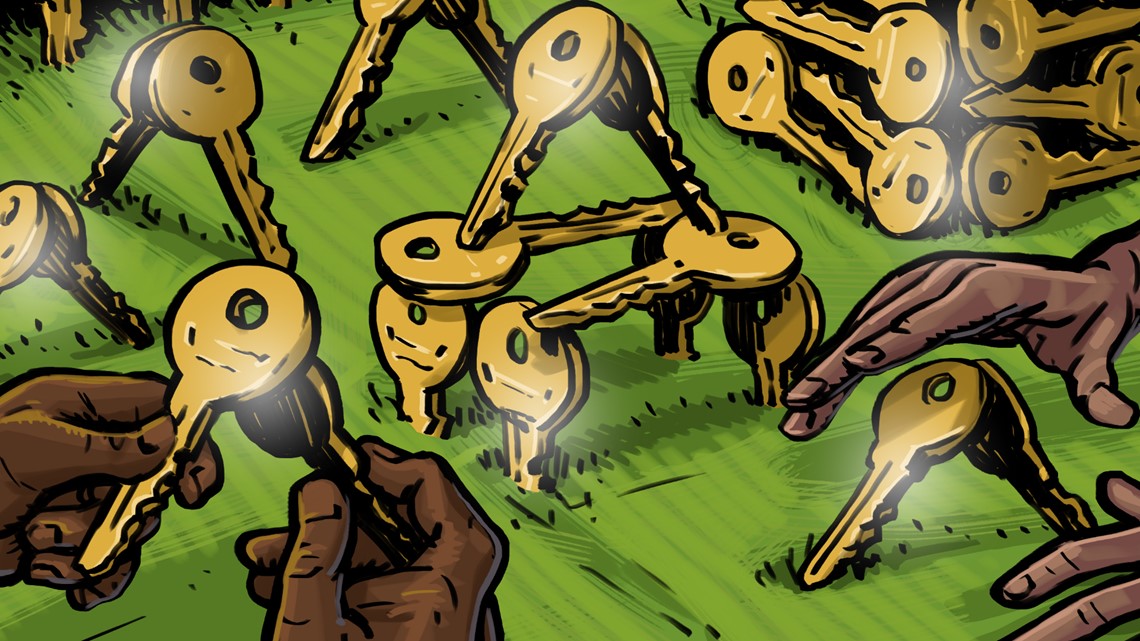
Author: Nick de la Canal, WFAE 90.7 FM
Picture an older home in need of some serious fixing up. Perhaps the floor is sinking, the drywall sagging, and the roof is in need of some work.
There could be two options for that home. One -- tear it down and build something new. The other might be to invest in fixing it up.
A group in Philadelphia is training residents to take the latter option, in the name of affordable housing. In doing so, it has helped preserve nearly 500 affordable units as a result.
The program -- called Jumpstart Philly -- is based on a model that could be replicated in Charlotte. Local, community-minded residents are trained in how to buy, renovate and sell old homes, and then supplied with loans and expert guidance for their first few projects.
Participants are encouraged to sell the fixed-up homes at affordable prices, and they keep whatever profit they make.
Participants have said the program has been empowering, among them, 38-year-old Lafayette Lee-Womack.
He never thought of himself as a home renovator, but is now nearly finished with his first project: a small, two-story row house in Philadelphia’s West Kensington neighborhood.
He beamed with pride as he walked through the row house on a recent Tuesday, sidestepping wooden beams and a metal ladder. He had just finished some roof repairs and a new HVAC and water heater installation, and he still had a few more items left on his renovation to-do list.
Before, the home had sat vacant and in disrepair. Lee-Womack purchased it for $75,000 from a friend’s mother, who owned the home since the 1980s. “It’s just been sitting here for years,” Womack said.
While he’s never taken on a renovation project at this scale before, he’s learned all the basics from his training in the Jumpstart Philly program.
‘A lot of people don’t have that rich uncle’
The program was created in 2015 by commercial developer Ken Weinstein.
“There’s a lot of people out there who don’t have that rich uncle who was in real estate development for years and can teach them how to do it. We are that uncle,” Weinstein said.
Community-minded residents are invited to enroll in the four-week, 16-hour training program, where they learn everything from property sourcing to zoning and construction.
When students finish the course, they’re paired with an experienced mentor who helps guide them through their first few projects. Weinstein said more than 2,000 people have taken the course.
“We get people across the board,” he said. “We get retirees, we get folks in college and we get lots of applications from contractors or realtors or just good neighborhood folk who want to remove blight from their community.”
Some program graduates win homes for $10
Graduates can also apply for loans from the program for their first few projects, and in recent years, a small group of lucky graduates have won a new program lottery that awards them a vacant home from the Philadelphia Housing Authority for the low price of $10.
Mamadou Ndiaye was one of 10 lottery winners in 2021.
“I’m what you would consider like more of a newbie in real estate investing,” he said.
The 28-year-old data analyst spent three months installing new floors, windows and appliances in the row house he won. Once finished, he was required to sell or rent it to someone making no more than 80% of the area’s median income.
“I wanted somebody who … was really interested in owning a home and homeownership, but was unable to just due to market conditions,” he said.
He found 32-year-old Jacki Saez, a lifelong Philadelphian who remembered without hesitation the date she closed on the two-story home in Philadelphia’s Kensington neighborhood.
“February 18th, 2022,” she remembered with a laugh.
Saez grew up in the neighborhood, and now could afford to move back and have her own space.
“I love having a little backyard -- like that was definitely top of the list, when I was looking for a home,” she said. Saez paid $175,000, and she’s restricted from selling to anyone other than another low-income buyer for 20 years, but she isn’t planning to sell anyway.
“My hope is that as my son gets older, and he starts to work, and chooses to go to college, this could be a home for him, or I hope to even support a family member, if needed,” she said.
Program graduates are overwhelmingly diverse
Jordan Parisse-Ferrarini was one of the first graduates in 2016, and said the program was changing the look of the city and the look of real estate developers.
“I’m seeing, for one of the first times, more diversity in the real estate and investing space -- like literally more Black and brown investors within the space since this program started,” he said.
While the Jumpstart Philly program is open to anyone, about 85% of graduates are women or people of color -- populations that historically have been underrepresented in real estate development.
To Parisse-Ferrarini, that makes a big difference. Development and gentrification are bound to happen in any city, he said, “but when you’re able to empower the members of the community that are there and that should be on the forefront and the decision-making and in the direction of those changes, programs like this are a game changer.”
Several other cities have started similar programs using the Jumpstart Philly model -- including Indianapolis, Oklahoma City and Wilmington.
At least two organizations in Charlotte have already begun exploring a similar approach. LISC Charlotte and West Side Land Trust have both funded renovations of a handful of homes that were sold at affordable prices to low-income residents.
Scaling those programs up to the level seen in Philadelphia could help increase Charlotte’s stock of affordable housing, and get more residents involved in creating and preserving affordable homes in Charlotte. They would need only the will and the investment.
NC law makes mandating affordable housing hard — did Asheville find a solution?

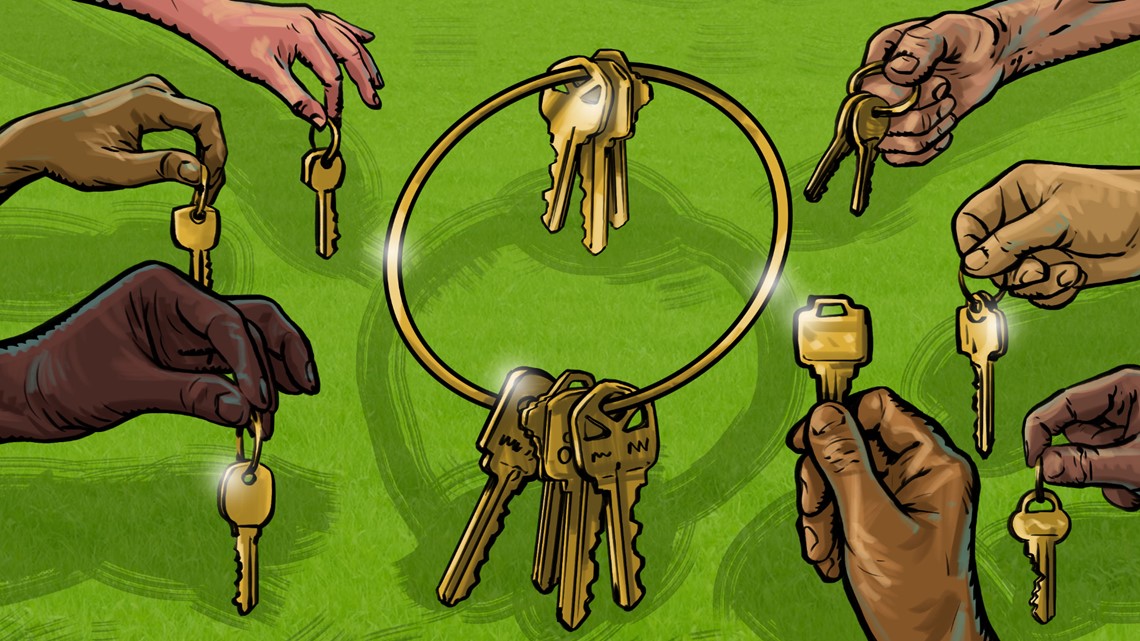
Author: David Aaron Moore, Qnotes
When Asheville put a temporary pause on construction of hotels three years ago, officials seized the moment to address a burgeoning affordability problem in their city.
In doing so, Asheville may have also left a breadcrumb trail that other North Carolina localities can follow to get around a state restriction many routinely cite as the reason city officials can’t adopt more rules to support affordable housing.
Some states, like California, require residential developers to provide a certain percentage of mixed income or lower cost housing in subdivisions. Other locales, like some municipalities in New York and states like Maryland and Connecticut encourage it through certain programs, oftentimes with tax incentives.
In North Carolina, local governments only have the powers granted to them by the state constitution and statutes. It’s known as “Dillon’s Rule.”
How has that affected affordable housing? In Charlotte, for example, City Council members can’t legislate or mandate that all developers or property owners build income-restricted housing or affordable units.
The city (and other taxing bodies) can and does offer incentives, grants and more.
But inclusionary zoning is off limits.
Inclusionary zoning effectively allows local governments to deny permissions to build or use land for residential purposes without a certain mix of affordable units being added.
In Asheville, officials stopped hotel construction after a years-long boom of developer interest. And while the city didn’t call what happened next “inclusionary zoning,” the game plan did achieve something similar.
When Asheville lifted its hotel moratorium, officials did so with more rules in place and established a new hotel overlay district. The overlay district — a zoning authority North Carolina municipalities may exercise — effectively replaced Asheville’s moratorium.
But in order to build hotels in it, developers would have to take steps to earn enough points in a system designed to aid affordable housing.
Points are earned by:
Pitching a hotel project that revamps and reuses a historic building
Donating to the city’s affordable housing or reparations fund
Agreeing to pay workers a higher, liveable wage
Contracting with women or minority-owned businesses
To guide the work, the city placed an emphasis on affordable housing points and required that at least half of the developer’s points come from contributing to that bucket.
“For example, a 100-room hotel in downtown Asheville would need to either contribute $400,000 to either the Housing Trust Fund or a Reparations Fund, or build 10 affordable for sale housing units, plus choose from a menu of other benefits such as supporting a Business Inclusion Program or providing living wages in order to get approval at the staff level,” explained a city spokesperson in a news release last year.
Could something similar work in Charlotte?
A Community Benefits Association (CBA) working in conjunction with the Charlotte City Council or the Mecklenburg County Commission could, in theory, create a similar scenario.
“For over a year and a half the city worked very hard at putting together a Community Benefits Association,” explains Jordan Brooks-Adams, the Executive Director of West Boulevard NC, one of the founding members of Charlotte’s Community Benefits Coalition (CBC) that includes more than 30 organizational members from Charlotte’s low-income and minority neighborhoods on the city’s east and west sides.
“I believe in the concept of community benefits programs,” she explains. “They work. We’ve seen them work all over the country.”
The city of Charlotte does have some authority, although it has limits. City Council recently passed source of income protections for renters in government-supported housing, followed by similar protections in Mecklenburg County. They are the first such protections in the state.
The new policies apply only to affordable housing developments receiving local government funds or financial incentives, including vouchers and the conveyance of real estate for affordable housing production. Owners that fail to comply will face thousands of dollars in fines.
Councilwoman Victoria Watlington, who spearheaded the city’s policy, said before voting she understands that there’s going to be more work to do in terms of expanding these protections. Like inclusionary zoning, any broader measure would require movement at the state level and that seems doubtful with the current political makeup of the legislature.
Asheville’s workaround has shown signs of success in meeting community needs. According to the Asheville Citizen-Times, the new hotel policy has resulted in more than $1 million toward the city’s reparations and affordable housing funds, while addressing concerns over infrastructure and design.
More than half of the projects approved have a mixed-use component, adding a total of 164 residential units.
Where state law prohibits requiring community benefits, city incentives became a way of encouraging private companies to be involved.
The CBC believes it's a roadmap for Charlotte’s affordable housing. The group proposed the creation of overlay districts as part of the Unified Development Ordinance (UDO) to areas of medium to high housing precarity in addition to projects within a mile radius of a light rail station.
Any development built within this area would trigger a community benefits table and developers would be required to choose whether or not to meet the point system or go through a standard rezoning process.
“We believe that community benefits us, and we believe the realization of these policies within the UDO should allow for communities to benefit from economic development rather than be bulldozed by it,” stated the group in its proposal.
The Charlotte City Council voted 6-4 to pass the UDO in August, without a community benefits plan — at least for now.
Rising rents have residents worried, but some wins in Austin could boost local organizers' efforts Austin's boosting tenant protections amid rising rents. Can Charlotte?


Author: Lexi Wilson, WCNC Charlotte
As Charlotte looks for ways to address its affordable housing crisis, officials may want to swipe an idea from Austin, Texas, where the community is battling gentrification and rising rents.
Charlotte is growing and so is its development and need for mobility, but there is fear that all the growth could fast track gentrification and push out long-time residents.
“We need some protection,” organizer for Action NC, a grassroots community organization, Jessica Moreno said.
Moreno says she’s worried that prices will continue to increase and drive out more people. Take South End for example, as the city rolled out the Blue Line, new development displaced many who once lived there. The area now caters to residents — mostly renters — who can afford to pay some of the city’s highest prices.
“Development is good, every city needs development but what we don’t need is development on the backs and blood of the community members who are the most vulnerable,” Moreno said.

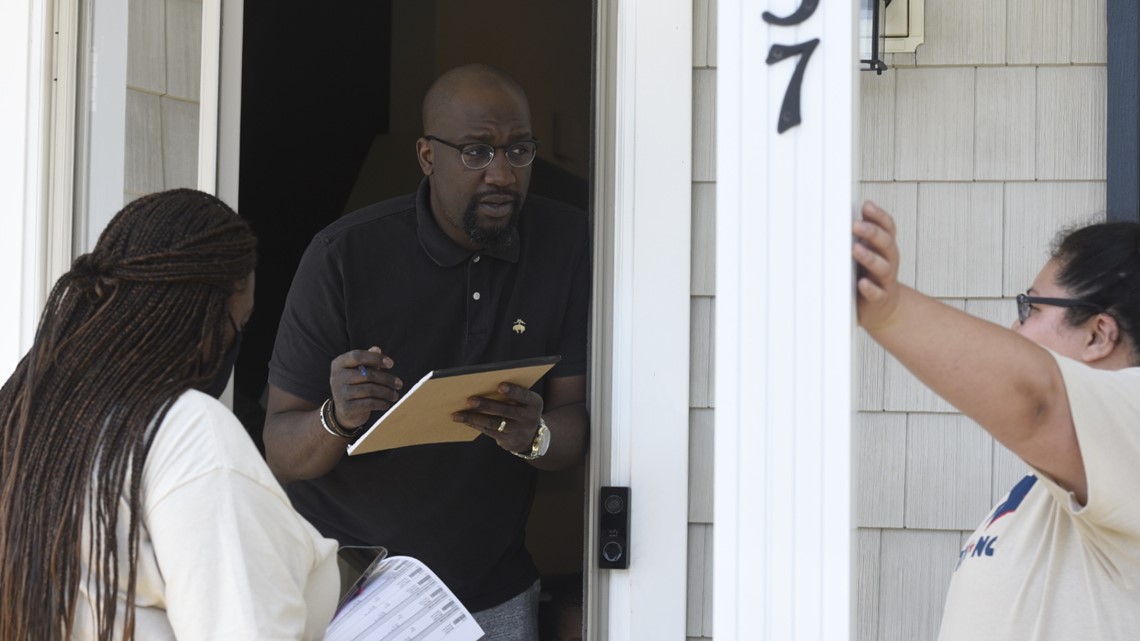
So how do we prevent displacement of the residents who built Charlotte to what it is today?
Take a look at Austin.
There, voters issued a bold call to action when they approved funding for a multi-billion-dollar transit plan that includes $300 million to help residents who may be forced out of their homes.
The money will go towards affordable housing, businesses owned by people of color, and strengthening tenant and homeowner rights within areas around the new transit most at risk of displacement.
“Tenants have power, tenants have rights,” Interim Executive Director of Austin Tenants Council Aja Gair said.
Austin Tenants Council is one of the organizations that received some of the funding. It will try to alleviate pressures of displacement.
Some examples include, ensure fair housing, address any issues with living conditions, and offer counseling and education to tenants.
“Having someone in your corner as an advocate who can help assert those rights sometimes it’s not safe or you don’t feel safe when your housing is at stake, to challenge a landlord or raise a red flag, but when you have an entity that can do some of that advocacy that is extremely beneficial for tenants,” Gair said.
The Austin City Council authorized a one-year contract with the Austin Tenants Council on October 13 to fund and administer a Tenants’ Rights Assistance Program. It is designed to deliver community education and information about tenant protection laws.
It’s that type of advocacy that Action NC and the Housing Justice Coalition are pushing for here in Mecklenburg County.
They recently submitted a proposal for new policies underpinned by the recognition that housing is a human right.
They asked the city and county to increase funding for programs that are preventing displacement such as RAMP, tax relief and others.
The city’s attorney sent Action NC and the Housing Justice Coalition a response saying, “The city is re-evaluating its aging in place program and other anti-displacement initiatives are under consideration. The issue of tax relief has legal obstacles that we are trying to work around by carefully tailoring programs to address the needs of low-income residents.”
“For a city that claims that they want to work on upward mobility and economic development for its citizens, their response doesn’t show that,” Moreno said.
Even with some evidence of a recent slow down, rents have skyrocketed the past two years. According to Redfin, year over year median rents rose last month by 8.9 percent in Austin and 7.2 percent in Charlotte.
Most states have laws that ban cities and counties from passing rent control measures, something advocates have pushed for in both states. Both North and South Carolina passed rent control bans in the 1980s.
In Austin, there are still challenges that housing advocates face, like keeping clients safe, helping tenants get help in a timely manner, and the need to reach younger renters, but Austin tenants believe leaders are taking displacement seriously by devoting money to community-initiated solutions.
WCNC Charlotte is part of seven major media companies and other local institutions producing I Can’t Afford to Live Here, a collaborative reporting project focused on solutions to the affordable housing crisis in Charlotte. It is a project of the Charlotte Journalism Collaborative, which is supported by the Local Media Project, an initiative launched by the Solutions Journalism Network with support from the Knight Foundation to strengthen and reinvigorate local media ecosystems. See all of our reporting at charlottejournalism.org.


